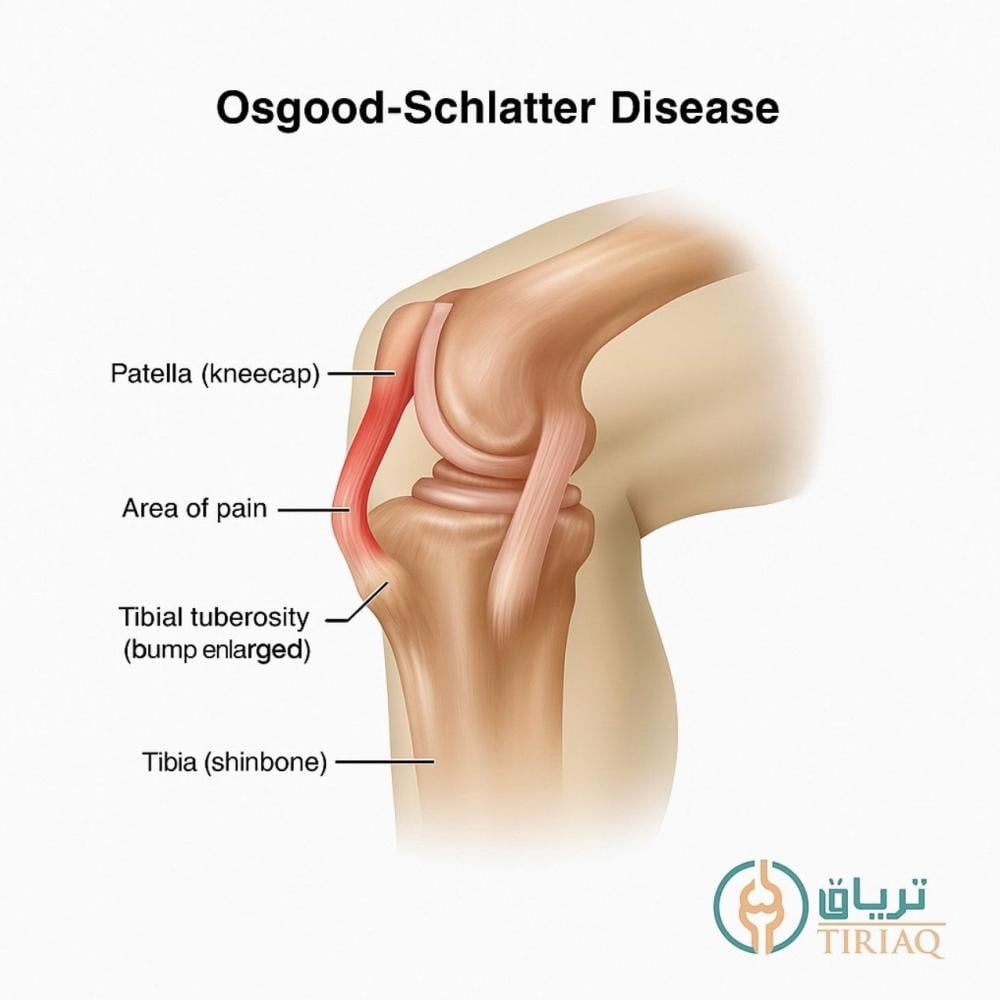-
العملة

Definition
Osgood–Schlatter Disease (OSD) is a common condition in teenagers, especially those who play sports that involve a lot of jumping or running. It happens when repeated stress causes irritation and inflammation at the point where the patellar tendon attaches to the shinbone (tibial tubercle), usually during growth spurts.
Etiology & Pathophysiology: -
OSD is primarily caused by repetitive stress on the patellar tendon, leading to microavulsions at the chondro-fibro-osseous junction of the tibial tuberosity. -This repetitive traction results in a local inflammatory response, which may lead to ossicle formation, subacute fractures, and irregular ossification of the tibial tubercle.
The most widely accepted mechanism involves repeated contraction of the knee extensor muscles, particularly the quadriceps.
If activity continues without rest, this may caus thickening of the patellar tendon, enlargement of the tibial tubercle, and potentially chronic anterior knee pain.
Causes:
• Repetitive physical activities such as jumping, running, and sudden directional changes.
• Microtrauma at the site of patellar tendon insertion.
• Commonly occurs during adolescent growth spurts.
Clinical Symptoms:
• Pain and swelling over the tibial tubercle.
• Discomfort increases with activity and improves with rest.
• May present with bony prominence, localized tenderness, and a limping gait.
• Often associated with tightness in the quadriceps and hamstring muscles
Diagnosis:
• Primarily clinical, based on patient history and physical examination.
• Plain radiographs (X-rays) may reveal:
• Superficial ossicles
• Fragmentation of the tibial tubercle
• Patellar tendon thickening
• MRI and ultrasound can provide further detail, showing:
• Soft tissue inflammation
• Edema or fluid collection in the infrapatellar bursa
• Ossicle development
Treatment:
Conservative Management (First-line):
• Modification of physical activity to avoid pain-inducing movements.
• Use of NSAIDs (e.g., ibuprofen) to reduce pain and inflammation.
• Regular stretching and strengthening exercises, especially for the quadriceps and hamstrings.
Surgical Intervention:
• Reserved for severe or persistent cases that do not respond to conservative treatment.
Prognosis:
• OSD is a self-limiting condition, with most cases resolving naturally.
• Full recovery is expected once skeletal maturity is reached.
• The majority of patients are able to return to full activity without long-term complications.